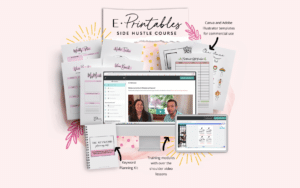Apache is functioning normally
If you’ve getting ready to apply to college, look on the bright side: It can be a good way to apply the skills you’ve learned in school to get organized and nail this project. It’s also a time to shine and show off your achievements over the past few years.
That said, like any big project, applying to college has a lot of moving parts and can feel intimidating at times. To help you break it down, it can be wise to use a college application checklist. Doing so can help you stay on track as you move ahead with navigating the next step in your education.
What follows is just that: a college application checklist and details on how to apply to the schools you’re interested in. As you’ll see, it can all boil down to 5 key steps. You’ve got this!
Tips for Getting Organized
Before you dive into your To Do list, take some time to get organized. Applying for college can definitely be complicated and time-intensive. Creating a system, including a college application checklist, can help prevent important details and dates from slipping through the cracks.
Before you start printing out forms and stashing brochures, label a folder for each school and list important information on the front, such as:
• College name
• Application deadline
• Type of deadline (early decision, early action, regular decision, or rolling admission)
• Application fee
• Application requirements (form, essay, recommendations, etc.)
Choose a single system to monitor all submissions and deadlines, and make sure your parents can also access the information.
One method of organization could be to file the folders by deadline dates rather than school names to ensure you get all documents to each school on time.
Keep copies of important documents, such as recommendation letters and student housing information, in each folder. Most early decision or early action deadlines are in November, while regular decision applications are usually due in January.
Make a note of any schools that have extra forms or a particular department within the college that has its own set of requirements. The university likely has a list of scholarship deadlines, which may be different from its application deadline.
College application deadlines tend to be set in stone, and admission officers may even frown upon those who wait till the last minute to submit their applications. It can be helpful to set reminders on your phone, computer, or the kitchen calendar.
Schedule reminders for at least a month before the real deadline so there’s plenty of time to ask questions, make adjustments, and get your application in well before the deadline. This can help you avoid that night-before-the-deadline discovery that you are missing a form.
Consolidate tasks whenever possible. If you need a recommendation for an extracurricular activity for two different schools, don’t ask the softball coach and the band conductor. Pick one and ask for a reference letter that can be easily customized for both schools.
Even the simplest college application is typically made up of multiple forms. You can use a physical filing system or cloud-based storage to store forms, recommendation letters, and more. As you gather materials, divide everything into folders for each college and label PDFs with short, descriptive names (MusicRecommendation, not “scan008877605.pdf”).
💡 Quick Tip: Fund your education with a low-rate, no-fee SoFi private student loan that covers all school-certified costs.
College Application Checklist
If you’re looking for a section to print out and check off as you go, this is it: your applying to colleges checklist. Then read on for details on how you might go about accomplishing these tasks.
• Create a filing system for schools organized by the application deadline
• Set reminders for application deadlines
• Gather test scores (SAT®, ACT®, etc.) if prospective schools require them
• Ask for 3 or more letters of recommendation
• Write personal essay (if needed)
• Fill out the Free Application for Federal Student Aid (FAFSA®)
• Research scholarships
1. Take Standardized Tests (Or Not)
First on your college application process checklist is to consider whether you need standardized test scores. A majority of colleges and universities no longer require standardized tests like the SAT and ACT for school applications — check with the schools you plan to apply to. If you want to play it safe and you have the time, you may want to take the test just in case.
Generally, students must register for tests about a month in advance. It will take a couple of weeks for scores to be distributed, and colleges receive scores about 10 days after students. So if your college application deadline is in January, you should schedule your test by October. Perhaps you’ll want to take it earlier if you want to give yourself enough time to retake the test if you’d like to try to get a higher score.
2. Request Letters of Recommendation
Next on your college application requirement checklist: Many colleges request 2 to 3 letters of recommendation. According to the College Board, these should be “written by someone who can describe your skills, accomplishments, and personality.” It’s wise to ask people who know you well and are enthusiastic about this prospect. You may want to request an extra letter or two, to accommodate letter-writers who miss their deadline or beg off at the last minute.
When asking for a recommendation letter, keep in mind that teachers and coaches are usually very busy and likely being asked by multiple students. If possible, give them at least a month to write a reference letter. Really, the earlier the better. Some schools require recommendations from teachers in specific subjects, so be mindful of specific requirements.
3. Check for Special Deadlines
You’ll want to consider other deadlines as well, such as applications for special dorms, department-level scholarships, registering for summer activities, and more. These things can end up coloring the college experience just as much as which university you get accepted to.
In many cases, dorms are available on a first-come, first-served basis. Applying early can help you get the specific type of dorm you want, such as co-ed, separated by gender, or substance-free.
4. Fill Out the FAFSA
While you’re gathering all the information for college, you’ll probably be thinking about how to pay for it. For this item on your college admission checklist, you’ll likely want to start with the Free Application for Federal Student Aid or FAFSA®, the form that parents and students must complete to be eligible for federal student loans and aid. Many colleges also use the FAFSA to decide if a student qualifies for its own grants and scholarships.
A university may offer both need-based and merit-based aid. Need-based aid is determined by a family’s income and circumstances, while merit-based aid is determined by academics, athletics, and other talents. The FAFSA helps colleges determine how much need-based federal aid a student qualifies for.
The FAFSA application is generally available starting in October but the 2024-2025 form will be available in December; the due date varies by state. Try to apply as early as possible because some financial aid is awarded on a first-come, first-served basis.
A common misconception is that the FAFSA is a one-time deal. In reality, the FAFSA must be filled out every year to account for any changes in income or other circumstances. For example, if one of your parents gets laid off from their job, you might qualify for more need-based aid.
For some students, federal aid (including federal student loans) isn’t enough to cover the full cost of attendance. If that’s the case, it may be time to look into some additional sources of funding.
Recommended: College Search Tool
5. Additional Funding Options
Some families are able to fill the gap between tuition costs and student aid with savings. Parents may take out loans in their own name to help children pay for college as well.
Other students are able to pay for a portion of their tuition with scholarships or grants. Scholarships and grants may require applicants to invest some time writing an essay or meeting other requirements. Any funds that are received can be a useful way to cover education costs since they don’t need to be repaid.
There are quite a few scholarship databases you can search to find those that fit your background and interests.
If you’ve exhausted your aid opportunities and are still looking to fill a gap, private student loans are an option to consider. While they don’t come with the same benefits as federal student loans (such as income-driven repayment plans and loan forgiveness options), they can be used to help pay for education expenses.
Unlike most federal student loans, the private student loan application process generally requires a credit check*. Some students may find they need a cosigner, which is someone who would be held responsible for the loan in the event the primary borrower fails to make payments.
💡 Quick Tip: Need a private student loan to cover your school bills? Because approval for a private student loan is based on creditworthiness, a cosigner may help a student get loan approval and a lower rate.
Stay Engaged in School
Once you’ve completed your college application checklist and your college applications are on their way, your last semester in high school can feel kind of pointless. Not true! Colleges will want to see those grades and know what you’ve been up to. If you’ve lost motivation, are cutting class, or let your grades slide, they’ll know it. And if you’re still taking AP exams, those results can determine whether you get credit for certain college courses.
So stay involved and send a follow-up letter listing any additional awards and achievements. This is your chance to show off what you’re capable of even when the pressure’s off.
Speaking of pressure, take time to relax — before, during, and after the application process. Plan some fun activities that don’t involve watching your inbox for acceptance letters. And congratulate yourself on making it this far.
The Takeaway
The college application process can be demanding. After all, the application itself is usually just one of many concerns. There may also be standardized tests to take, letters of recommendation to collect, personal essays to write, housing to consider, and financial aid applications to complete. It can be wise to use an applying to colleges checklist. The earlier you complete the tasks on it, the less stressed you’ll be — and that can be reflected in the quality of your application. Stay on top of all deadlines, and set reminders well in advance so you never have to pull an all-nighter. Save those for college.
If you’ve exhausted all federal student aid options, no-fee private student loans from SoFi can help you pay for school. The online application process is easy, and you can see rates and terms in just minutes. Repayment plans are flexible, so you can find an option that works for your financial plan and budget.
Cover up to 100% of school-certified costs including tuition, books, supplies, room and board, and transportation with a private student loan from SoFi.
Checking Your Rates: To check the rates and terms you may qualify for, SoFi conducts a soft credit pull that will not affect your credit score. However, if you choose a product and continue your application, we will request your full credit report from one or more consumer reporting agencies, which is considered a hard credit pull and may affect your credit.
SoFi Loan Products
SoFi loans are originated by SoFi Bank, N.A., NMLS #696891 (Member FDIC). For additional product-specific legal and licensing information, see SoFi.com/legal. Equal Housing Lender.
SoFi Private Student Loans
Please borrow responsibly. SoFi Private Student Loans are not a substitute for federal loans, grants, and work-study programs. You should exhaust all your federal student aid options before you consider any private loans, including ours. Read our FAQs.
SoFi Private Student Loans are subject to program terms and restrictions, and applicants must meet SoFi’s eligibility and underwriting requirements. See SoFi.com/eligibility-criteria for more information. To view payment examples, click here. SoFi reserves the right to modify eligibility criteria at any time. This information is subject to change.
Financial Tips & Strategies: The tips provided on this website are of a general nature and do not take into account your specific objectives, financial situation, and needs. You should always consider their appropriateness given your own circumstances.
External Websites: The information and analysis provided through hyperlinks to third-party websites, while believed to be accurate, cannot be guaranteed by SoFi. Links are provided for informational purposes and should not be viewed as an endorsement.
Third-Party Brand Mentions: No brands, products, or companies mentioned are affiliated with SoFi, nor do they endorse or sponsor this article. Third-party trademarks referenced herein are property of their respective owners.
SOIS1023013
Source: sofi.com





